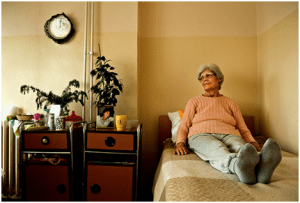Each week, Dr. Mauk shares thoughts relevant to Baby Boomers that are aimed to educate and amuse.
Guest Blog: Take Care Of Your Health Mentally And Physically While Working At Home With These 7 Tips
When working at home, it’s easy to neglect your physical and mental health. You have little access to the gym, and even biohacking your wellness is barely possible. If you want to continue being productive, optimizing your work from home activities can help maximize your wellness.
Working from home can be the root of all kinds of health issues if you don’t have enough discipline. Here are x tips you can do to take care of your physical and mental health.
1. Eat Healthy Meals
Eating healthy isn’t hard, but not many people know where to start. It’s all about planning and having fresh ingredients ready, and knowing what to prepare. Eating healthy is not simply salads, veggie smoothies, and icky stuff. You can incorporate your favorite meals while being healthy.
The fridge and the pantry are your best friends. Prepare yummy, locally-based meals made with locally sourced meats, veggies, and fruits. Meal prep is the key if you think you don’t have enough time.
A simple way to eat healthier is to plan your meals and cook yourself. Batch cooking can also save you a lot of time and give you quick access to something when you’re feeling peckish. Try keeping your fridge and cupboards stocked with healthy foods. Eat your favorites in moderation to help control your weight.
2. Take Frequent Breaks
Let’s be honest: working from home can be rewarding and frustrating. Sometimes, you get stuck and can’t move forward until you reach that brick wall. When you come to this point, take a step back and take a break.
Whatever you do, don’t sit at your desk for hours. Take short breaks every hour or follow the 20-20-20 rule, where you look 20 feet away for 20 seconds every 20 minutes of screen time. This will help relieve the tiredness of your eyes after long hours of working.
When you take regular, quick 5-minute walks, you’ll feel more energized and productive. Every 30 minutes, get up and move around. Stretch your legs and get some circulation on your legs to prevent atrophy and having fat develop on your belly.
3. Exercise, Exercise, Exercise
Physical fitness plays a huge role in your productivity. If you stay fit, you’ll have more energy, sleep more soundly, and be more productive.
You can’t just lie in bed all day and expect to lose weight or improve your overall health. You need to exercise and stick to it. You’re probably thinking, “But I don’t go to the gym.” You don’t need to leave the house to exercise.
Find an exercise that you can do daily. Maybe it’s yoga, weightlifting, or stretching. If you hate going to the gym, then do it in the comfort of your own home. There are a ton of YouTube workouts you can do without leaving the house.
You can easily do strength training, cardio, or yoga if you have a home workout room. You can always use bodyweight exercises or resistance bands if your home doesn’t. Do heavy chores if you have to, just to get good cardio.
4. Go Outside
When you work inside, you get less exposure to sunlight. This causes vitamin D deficiency, which can cause many health problems. Lack of vitamin D causes depression, fatigue, muscle pain, and seasonal affective disorder.
Your mind and body need fresh air. If you live in the city, there are endless options of where to get some fresh air. You can take a walk in your neighborhood and breathe in some much-needed oxygen.
When you go outdoors, you improve your mood, sleep better, and have more energy. Go outside and take a walk. Take a break and go to the nearest park; it’s even better if you’re near a lake or beach. Go to the beach, swim, then relax under the sun.
If you work in an isolated area, turn your home office into a mini garden. Plant some herbs and vegetables, flowers, or even trees.
5. Find a Hobby
Hobbies are not simple pastimes but rather a way to release your creativity. If you don’t find a hobby that brings you joy, you may become depressed, especially if you don’t use it as an outlet for your stress.
Having hobbies helps you relax and reduce stress. Hobbies are a way to unwind and recharge after a long workday. It can be anything that stimulates your mind. It can be anything, from writing short stories to working on your art.
Choose something that you like. If you love writing, start a blog, start writing early in the morning, and finish your articles before working. If you like photography, join a local group. Join a book club, anime club, or volunteer organization. And if you’re a gamer, join a guild and chat with other players.
6. Meditate and Practice Mindfulness
Meditation and mindfulness are not just ways to relax but also ways to practice self-control. These practices can lower your stress levels and keep you focused. Meditation clears your head and lets you focus on your breathing and the current moment, helping mitigate anxiety and give you a sense of well-being.
If you’re new to meditation and start building a habit of doing it, start with 10 to 15-minute sessions. Gradually increase your meditation time and increase the length of each session. You can meditate anywhere, even in your office or bedroom.
Start meditating before you go to bed. This will prevent you from tossing and turning and trying to fall asleep. Meditating will calm you down and help you have a peaceful night of undisturbed rest.
7. Get Enough Sleep
When you don’t get quality sleep at night, your brain won’t be functioning at its total capacity. It can cause fatigue and affect your mood and behavior. When you sleep well, you wake up refreshed and ready to face the day the following day. If you’re awake for 18 hours straight, it’s almost the same as being up for 24.
Your quality of shut-eye affects your mental health. It prevents you from getting happy or sad because of whatever happened the previous day. You can think clearly and make better decisions.
Get 7 to 9 hours of sleep every night. If you have a hard time falling asleep, try taking a warm shower, drinking some chamomile tea, or doing light stretches.
The Bottom Line
When you work from home, the quality of your work matters. When you take care of your health, you become more productive, allowing you to focus more on your work. It’s easy to forget how you have to take care of yourself.
time to exercise or eat right, you become more energetic and happier. You’ll be more creative and have excellent decision-making skills. Good health means a better drive to reach your goals.
You don’t want your physical or mental health to get in the way of your productivity and success. Apply these tips and stay healthy while maximizing your time and energy at home.






